Related Research Articles

Blitzkrieg or Bewegungskrieg is a word used to describe a combined arms surprise attack using a rapid, overwhelming force concentration that may consist of armored and motorized or mechanized infantry formations; together with artillery, air assault, and close air support; with intent to break through the opponent's lines of defense, dislocate the defenders, unbalance the enemies by making it difficult to respond to the continuously changing front, and defeat them in a decisive Vernichtungsschlacht: a battle of annihilation.
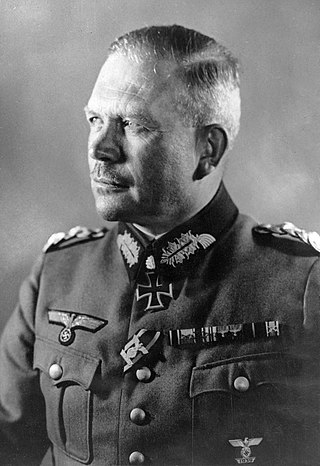
Heinz Wilhelm Guderian was a German general during World War II who, after the war, became a successful memoirist. An early pioneer and advocate of the "blitzkrieg" approach, he played a central role in the development of the panzer division concept. In 1936, he became the Inspector of Motorized Troops.

The Panzer I was a light tank produced by Nazi Germany in the 1930s. Its name is short for Panzerkampfwagen I, abbreviated as PzKpfw I. The tank's official German ordnance inventory designation was Sd.Kfz. 101.

Reichswehr was the official name of the German armed forces during the Weimar Republic and the first years of the Third Reich. After Germany was defeated in World War I, the Imperial German Army was dissolved in order to be reshaped into a peacetime army. From it a provisional Reichswehr was formed in March 1919. Under the terms of the Treaty of Versailles, the rebuilt German Army was subject to severe limitations in size, structure and armament. The official formation of the Reichswehr took place on 1 January 1921 after the limitations had been met. The German armed forces kept the name Reichswehr until Adolf Hitler's 1935 proclamation of the "restoration of military sovereignty", at which point it became part of the new Wehrmacht.

Moritz Albrecht Franz Friedrich Fedor von Bock was a German Generalfeldmarschall who served in the German Army during the Second World War. Bock served as the commander of Army Group North during the Invasion of Poland in 1939, commander of Army Group B during the Invasion of France in 1940, and later as the commander of Army Group Center during the attack on the Soviet Union in 1941; his final command was that of Army Group South in 1942.
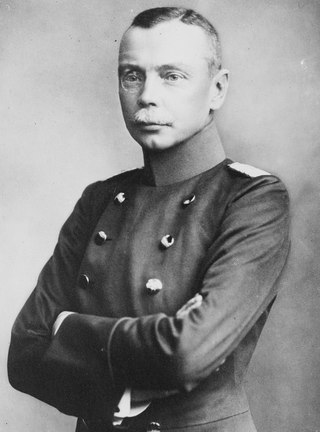
Johannes "Hans" Friedrich Leopold von Seeckt was a German military officer who served as Chief of Staff to August von Mackensen and was a central figure in planning the victories Mackensen achieved for Germany in the east during the First World War.

The 1st Panzer-Division was an armoured division in the German Army during World War II.

The 2nd Panzer Division was an armoured division in the German Army, the Heer, during World War II.
The 3rd Panzer Division was an armoured division in the German Army, the Wehrmacht, during World War II.
Kama is a concept translated from Sanskrit as pleasure, sensual gratification, sexual fulfilment or the aesthetic enjoyment of life.
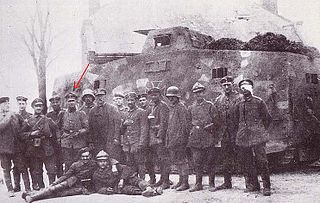
Ernst Volckheim was one of the founders of armored and mechanized warfare. A German officer in the First and Second World War, Volkheim rose to the rank of colonel, during World War II in the German Army. Little known outside of professional military and historical circles, Volckheim is considered the foremost military academic influence on German tank war proponent, Heinz Guderian, because both Volckheim's teaching as well as his 1924 professional military articles place him as one of the very earliest theorists of armored warfare and the use of German armored formations including independent tank corps.
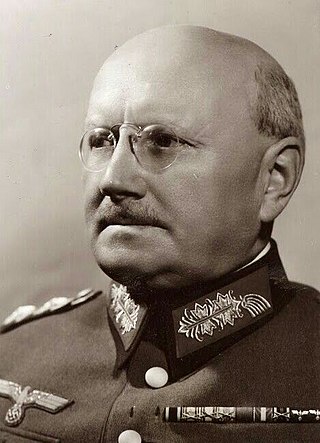
Oswald Lutz was a German General who oversaw the motorization of the German Army in the late 1920s and early 1930s and was appointed as the commander of the Wehrmacht's Panzer Troops Command in 1935.
Ernst Feßmann was a German general of the Heer who led the 267th Infantry Division in the early stages of World War II. Prior to the war, he was also notable for commanding one of the first Panzer Divisions.
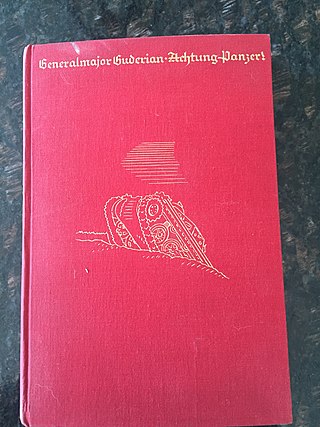
Achtung – Panzer!, written by Heinz Guderian, a German World War II tank commander, is a book on the application of motorized warfare. First published in 1937, it expounds a new kind of warfare: the concentrated use of tanks, with infantry and air force in close support, later known as Blitzkrieg tactics. The book also argues against the continued use of cavalry given the proven effectiveness of the machine gun, and advocates replacing the cavalry with mechanised infantry. It was never properly studied by the French or the British general staff, both of whom helped introduce the tank.

This article deals with the tanks serving in the German Army throughout history, such as the World War I tanks of the Imperial German Army, the interwar and World War II tanks of the Nazi German Wehrmacht, the Cold War tanks of the West German and East German Armies, all the way to the present day tanks of the Bundeswehr.
The Lipetsk fighter-pilot school, also known as WIWUPAL from its German codename Wissenschaftliche Versuchs- und Personalausbildungsstation "Scientific Experimental and Personnel Training Station", was a secret training school for fighter pilots operated by the German Reichswehr at Lipetsk, Soviet Union, because Germany was prohibited by the Treaty of Versailles from operating an air force and sought alternative means to continue training and development for the future Luftwaffe. It is now the site of Lipetsk Air Base.

The Leichttraktor (Vs.Kfz.31) was a German experimental tank designed during the Interwar Period.
Grosstraktor was the codename given to six prototype medium tanks built by Rheinmetall-Borsig, Krupp, and Daimler-Benz, for the Weimar Republic, in violation of the Treaty of Versailles. Constructed in secret, they were tested by Reichswehr units at the Kama tank school in the Soviet Union. They were used for training and retired as monuments after the Nazi party came to power.
Heinrich von Prittwitz und Gaffron was a general officer in the Heer (Army) branch of the Wehrmacht of Nazi Germany during World War II. He was commander of the 14th and 15th Panzer Divisions and was killed in action in the early stages of the Siege of Tobruk.

Tomka gas test site was a secret chemical weapons testing facility near a place codenamed Volsk-18, 20 km off Volsk, now Shikhany, Saratov Oblast, Russia created within the framework of German-Soviet military cooperation to circumvent the demilitarization provisions of the post-World War I Treaty of Versailles. It was co-directed by Yakov Fishman, and German chemists Alexander von Grundherr and Ludwig von Sicherer. It operated during 1926-1933.
References
- 1 2 3 4 5 Lipezk. Die geheime Fliegerschule und Erprobungsstätte der Reichswehr in der Sowjetunion (in German) German Federal Archives, accessed January 21 2020
- ↑ Higgins 2015, p. 13.
- ↑ Geheimvertrag mit der Roten Armee (in German) Der Spiegel : Secret contracts with the Red Army, accessed 17 December 2011
- ↑ Mitcham, p. 3
- 1 2 Mitcham, p. 4
- ↑ Кашапов Р. А. Контрразведка на «Каме» КГБ вчера, сегодня. Сборник статей, воспоминаний, документальных свидетельств о деятельности Комитета государственной безопасности Республики Татарстан. — Казань, 1997. — С. 38.
- ↑ Гришин, Емельянов. Советско-германский военный словарь
- ↑ Sally W Stoecker, Forging Stalin's Army: Marshal Tukhachevsky And The Politics Of Military Innovation , Routledge, 2018, ISBN 0429980027, pp.137-150
Bibliography
- Samuel W. Mitcham (2000). The Panzer Legions, Stackpole Books. ISBN 9780811733533.
- Higgins, David R. (2015). Panzer II vs 7TP: Poland 1939. Oxford: Osprey. ISBN 9781472808820.